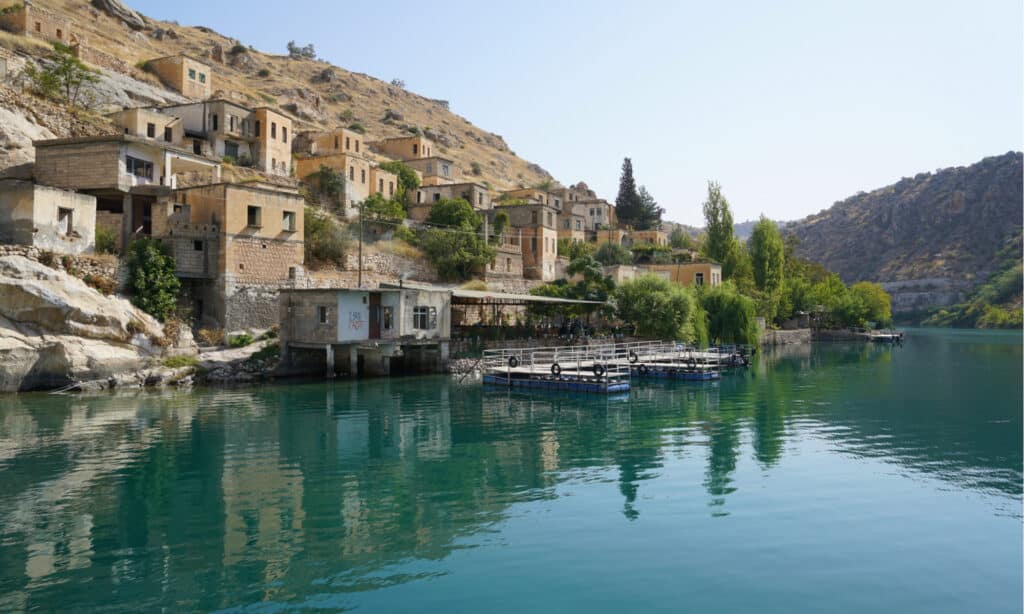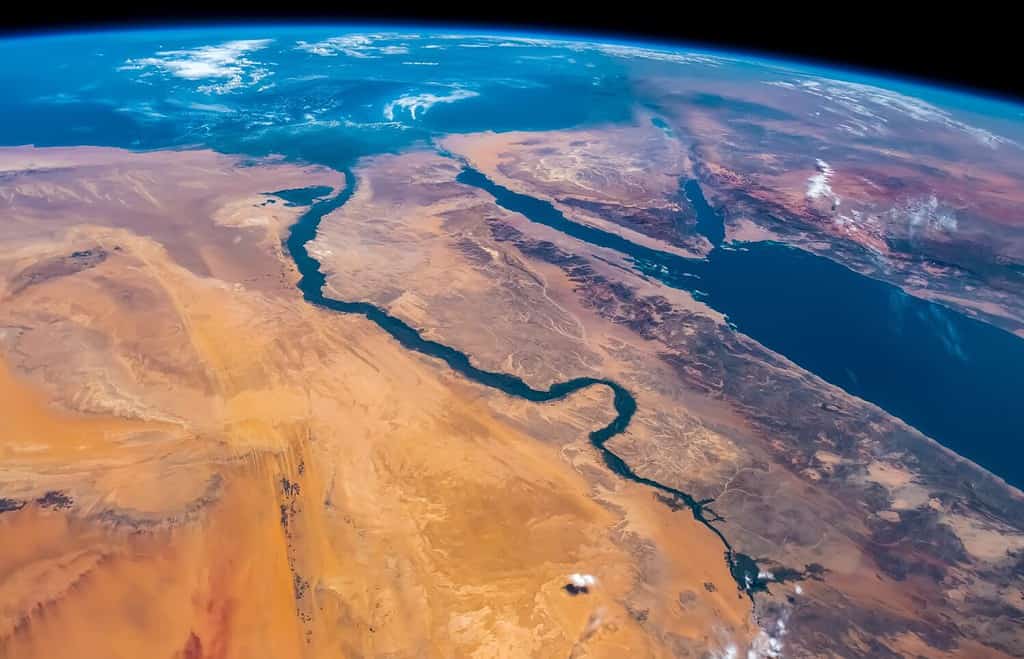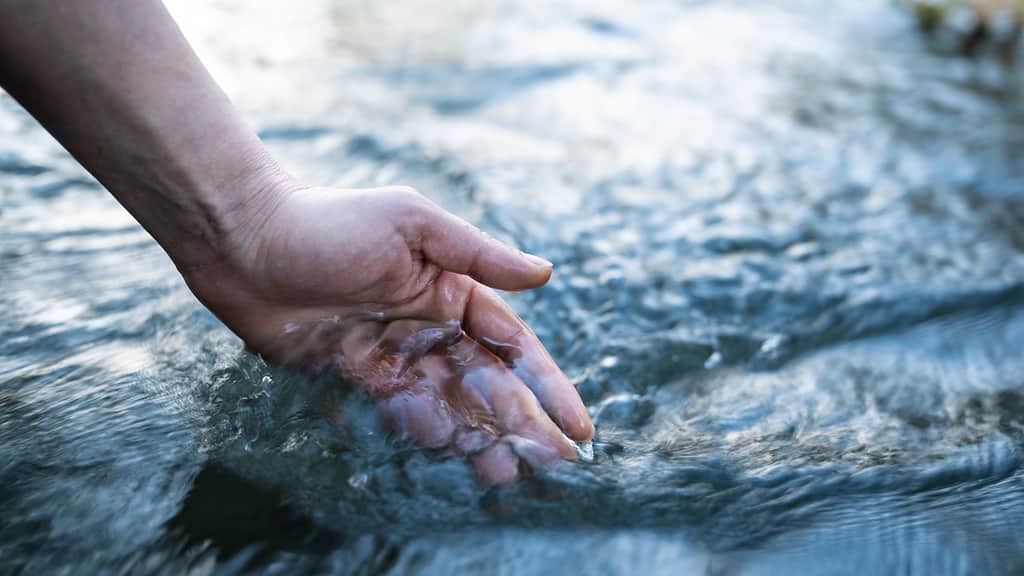The setting of the Bible is the Middle East. From ancient times, civilization there has depended on rivers. The hot, arid climate of the region would make it all a desert if there were no rivers. Three rivers in the Bible are mentioned most often: the Euphrates, the Nile, and the Jordan. But there’s also a fourth river described in the afterlife. It’s perhaps the most important river of all: the river of life. So let’s explore the four most important rivers in the Bible.
The Euphrates
The Euphrates River starts in what is today Turkey and flows through Syria and Iraq to the Persian Gulf. The Bible mentions it as one of four rivers that flowed through the legendary Garden of Eden. Many great civilizations developed in the region of Mesopotamia, watered by these rivers.
The Bible describes the building of the Tower of Babel in the region. It was also the site of the city of Ur. Abraham lived there before being called to migrate with his family to the Promised Land of Israel. At the height of Israel’s expansion under King David, the nation’s borders reached the Euphrates in Syria. The Babylonian Empire was one of the most powerful nations that developed along the Euphrates. They conquered Israel and took many of its people into exile. Some of the Psalms in the Bible were written by Israelites on the banks of the Euphrates.
Finally, the Bible makes a prediction about the end of the world that involved this river. It says the river will dry up to allow passage of Eastern armies to join the world-ending battle of Armageddon. Indeed, due to climate change and multiple dams built on the river, the Euphrates is drying up in Iraq. Some Christians see this as a fulfillment of the Bible’s prophecy.

The Euphrates River was the lifeblood of a series of powerful civilizations mentioned in the Bible.
©Sadik Yalcin/Shutterstock.com
The Nile
The Nile is the longest river in the world, at 4,132 miles. Its two headwaters begin in Uganda and Ethiopia and flow north through 11 countries to the Mediterranean Sea. The country most often associated with the Nile, of course, is Egypt. Egypt figures prominently in the Old Testament. It was the country where the people of Israel spent over 400 years in slavery. Fearful of the growing Israelite population, the pharaoh ordered that male Israelite babies be thrown into the Nile. This was a cruel way to ensure they would not grow up to rebel against Egypt.
The biblical book of Exodus describes how the infant Moses was saved from this genocidal policy. His mother put him in a basket and floated it down the river. Fortuitously, an Egyptian princess found him and decided to raise him as her own. Moses grew up to lead God’s people out of Egypt. A series of plagues helped force the pharaoh to let them leave. Some of these involved the Nile: large numbers of frogs came out of it, and the water turned to blood.
The Nile itself is not mentioned in the New Testament. However, the parents of the infant Jesus fled to Egypt to escape from King Herod. Undoubtedly, they would have seen the Nile while they lived there. Virtually the entire population lived close to it and earned a living connected to it somehow.

In this satellite view, the Nile River flows through Egypt to the Mediterranean. According to the Bible, the Israelites were in captivity in Egypt over 400 years before Moses led them to freedom.
©Emre Akkoyun/Shutterstock.com
The Jordan
The Jordan is a short river that runs from the Sea of Galilee to the Dead Sea. Today, it makes up the border between the West Bank in Israel and Jordan. Although it is not a large river, it sometimes flooded during rainy seasons and became difficult to cross. The Bible describes how the Israelites conquered several kingdoms to the East of the Jordan. Afterward, they needed to cross the flooded Jordan to continue their campaign. God parted the water, just like he previously did to the Red Sea in their escape from Egypt.
In the New Testament, the Jordan is especially important as one of the significant birthplaces of Christianity. It was the site where the prophet John the Baptist preached a message of repentance and the coming Messiah. John got his name because he baptized in the river those who believed his message. Jesus himself was one of the people John baptized. John reported seeing God’s Spirit descend to Jesus and heard the voice of God authenticating Jesus as his Son. Today, Christian tourists to Israel often choose to be baptized in the Jordan to feel a closer connection to Jesus.

The Jordan River is particularly important in the Bible because it is the site where Jesus was baptized.
©iStock.com/dnaveh
The River of Life
A fourth and perhaps most important river mentioned in the Bible is the River of Life. The last chapter of the Bible, Revelation 22, mentions it. After having described terrible suffering and destruction on Earth, the book ends on a hopeful and triumphant scene. In Heaven, a crystal-clear river flows eternally from the throne of God and the Lamb (Jesus). This represents eternal life, freely available to everyone in Heaven.
In this vision, the river flows down the middle of the street. The tree of life grows on both sides of it, producing fruit that heals the people of the world. God’s followers will worship him in great joy, with no suffering, pain, or sadness to trouble them ever again. So, in this life and the next, rivers are a life-giving blessing to humanity.

Rivers are vitally important to human life. It’s not surprising, the Bible uses a river as a symbol of eternal life in a future paradise.
©iStock.com/seb_ra
The photo featured at the top of this post is © iStock.com/Christopher-Sprake
Thank you for reading! Have some feedback for us? Contact the AZ Animals editorial team.






